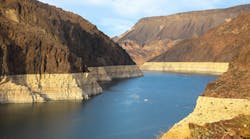Toronto: A Leader in Green Roofs
According to a blog entry from Switchboard, NRDC's staff blog, Toronto became the first city in North America to require the installation of green roofs on new commercial, institutional and multifamily residential developments across the city in January of 2010. This week, that requirement will expand to apply to new industrial developments as well.
Simply put, a “green roof” is a rooftop that is vegetated. Green roofs produce multiple environmental benefits by reducing the urban heat island effect and associated energy demand, absorbing rainwater before it becomes runoff, improving air quality and bringing nature and natural diversity into urban environments. In many cases, green roofs can also be enjoyed by the public much as a park can be.
Toronto’s requirements are embodied in a municipal bylaw that includes standards for when a green roof is required and what elements are required in the design.
Generally speaking, smaller residential and commercial buildings (such as apartment buildings less than six stories tall) are exempt; from there, the larger the building, the larger the vegetated portion of the roof must be. For the largest buildings, 60% of available space on the roof must be vegetated.
For industrial buildings, the requirements are not as demanding. The bylaw will require that 10% of available roof space on new industrial buildings be covered, unless the building uses “cool roofing materials” for 100% of available roof space and has storm water retention measures sufficient to capture 50% of annual rainfall (or the first five mm from each rainfall) on site. For all buildings, variances to compliance (for example, covering a lesser roof area with vegetation) may be requested if accompanied by fees (keyed to building size) that are invested in incentives for green roof development among existing building owners. Variances must be granted by the City Council.
The industry association Green Roofs for Healthy Cities announced last fall in a press release that Toronto’s green roof requirements had already resulted in more than 1.2 million sq ft of new green space planned on commercial, institutional and multifamily residential developments in the city. According to the association, the benefits will include more than 125 full-time jobs related to the manufacture, design, installation and maintenance of the roofs; reduction of more than 435,000 cu ft of storm water (enough to fill about 50 Olympic-size swimming pools) each year; and annual energy savings of over 1.5 million KWH for building owners.
You can read the original NRDC blog entry here.
Source: Switchboard, the NRDC Council Staff Blog


